MikeA57
Silver Member
OK guys, last week I posted a thread asking about box blading with turf tires on my tractor. It rained a LOT last night and my back yard swamp has reappeared so this morning I went out and took some pictures of the raging waters. This is NOT the worst it's been. It has come down to the point that I would've been scared to cross this area it was running so fast. But this gives an idea of what I'm dealing with. I've attached pictures of the runoff and also an overhead view of the path it takes. I know the pictures don't give a clue as to the actual terrain and slope but I'll try to get elevations of the areas once it stops raining to add to this.
The red lines on the picture indicate the path of the water as it runs across the properites. The orange circular area is where it pools up when the pond gets too full and the blue circles are mounds of dirt left over from previous digging (before I owned this place). The smaller one is from the dig out of the pool in the upper left of the picture and the larger one was moved from where the pond was dug out. I own both lots in the picture (green lines) so making grading changes is entirely up to me. I've got a son in law who works for a company that has bobcats with FELs that I can get onsite.
Here are my initial thoughts:
Area 1 - use dirt from the mounds to build up on either side of the water run just to try to keep it focused as it runs.
Area 2 - I'm thinking of digging out where it runs from my back yard to the back lot over towards the pond, again just to channel it. I'm not talking about digging it out much, just to define the run more.
Area 3 - I would use more dirt to line and define the edges.
Area 4 - The runoff from this neighbor's yard is much less than the others but it too needs focusing so it's not so wide as it runs down. I would try to build it up again on either side to do this.
I've still got to cut both lots so anything I do can't be so drastic that it prevents that. Do these ideas make sense?
The red lines on the picture indicate the path of the water as it runs across the properites. The orange circular area is where it pools up when the pond gets too full and the blue circles are mounds of dirt left over from previous digging (before I owned this place). The smaller one is from the dig out of the pool in the upper left of the picture and the larger one was moved from where the pond was dug out. I own both lots in the picture (green lines) so making grading changes is entirely up to me. I've got a son in law who works for a company that has bobcats with FELs that I can get onsite.
Here are my initial thoughts:
Area 1 - use dirt from the mounds to build up on either side of the water run just to try to keep it focused as it runs.
Area 2 - I'm thinking of digging out where it runs from my back yard to the back lot over towards the pond, again just to channel it. I'm not talking about digging it out much, just to define the run more.
Area 3 - I would use more dirt to line and define the edges.
Area 4 - The runoff from this neighbor's yard is much less than the others but it too needs focusing so it's not so wide as it runs down. I would try to build it up again on either side to do this.
I've still got to cut both lots so anything I do can't be so drastic that it prevents that. Do these ideas make sense?
Attachments
-
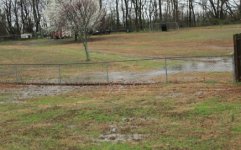 1-From the neighbors yard.JPG127.2 KB · Views: 259
1-From the neighbors yard.JPG127.2 KB · Views: 259 -
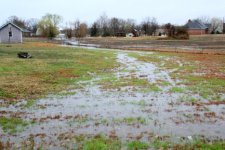 2-Across my backyard.JPG133.9 KB · Views: 250
2-Across my backyard.JPG133.9 KB · Views: 250 -
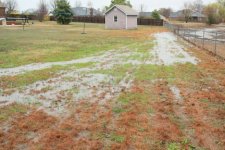 3-Crossing over into the back lot (I own also)JPG.jpg138.3 KB · Views: 218
3-Crossing over into the back lot (I own also)JPG.jpg138.3 KB · Views: 218 -
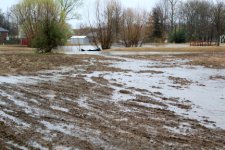 4-Then across the back lot to the neighbor's pond.JPG142.3 KB · Views: 240
4-Then across the back lot to the neighbor's pond.JPG142.3 KB · Views: 240 -
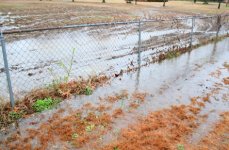 5-Water also comes down from neighbor's yard next to back lot alsoJPG.jpg152.5 KB · Views: 217
5-Water also comes down from neighbor's yard next to back lot alsoJPG.jpg152.5 KB · Views: 217 -
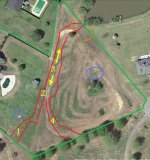 Overhead view of backyard swamp.jpg57.7 KB · Views: 327
Overhead view of backyard swamp.jpg57.7 KB · Views: 327